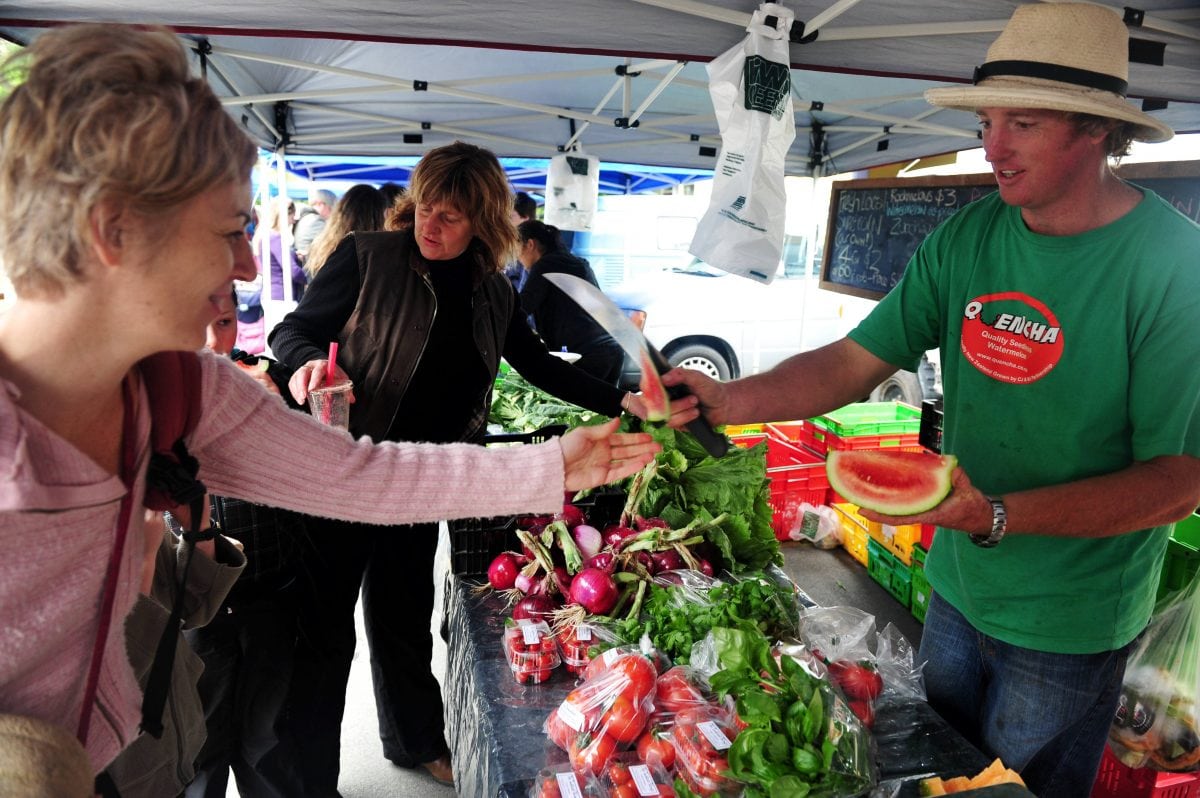I’m convinced that to be the best physician possible, to be the ultimate health advocate for my clients, I need to be a coach, a personal trainer, a nutritionist, and a farmer.
That’s right. Our health may rely on farmers as much as on doctors. Farmers control how our vegetables are grown and how our animal protein sources are raised. It turns out, that’s a pretty big deal.
200 Decisions per day!
Every day we make over 200 food and drink related decisions. Decisions to put substances into our bodies that either augment our health, or substances that poison our health. Considering that over 60% of the average American’s calories come from moderately or heavily processed food, the poison seems to be winning.
Instead, we need to focus on a real-foods, plant-based nutrition with a high proportion of healthy fats and, for many, appropriate proportions of high-quality animal protein. With these nutritional choices, we would see the incidence of diabetes, heart disease, strokes, dementia and other chronic diseases plummet.
Better Than Good
But what if we are already pretty health conscious with how we eat? What if we want to make sure the food we put in our bodies augments our health as much as possible?
For that, we need to look beyond the macro-nutrients. We need to look to the farms.
We have all heard the buzz words that we should eat local, organic produce. We should eat grass fed beef. Our eggs and chickens should be pasture raised. But does it really make a difference?
Yes, Yes and Yes!
Studies have shown that grass-fed meat has higher levels of vitamin A, vitamin E, Omega 3 fatty acids, and more beneficial saturated fats (such as CLA and stearic acid) compared to grain fed meat. In addition, wild fish have fewer dioxin contaminants compared to farmed fish, and greater benefit to harm ratios that farmed fish. Pasture-raised chicken produce meat and eggs with higher levels of vitamin E, omega-3 fatty acids, and vitamin A compared to cage-raised poultry.
When it comes to animal proteins, quality matters. A lot. Not to mention the ethical considerations of how these animals are raised.
The industrialization of the food industry has done nothing to improve the quality of our food, and in fact, has done the opposite. To be fair, it has allowed some populations to enjoy animal protein at an affordable price, but it has gone too far. I’m not sure of the exact definition of “too far,” but all you need do is see the conditions at a CAFO (Concentrated Animal Feeding Operation) to know we have gone too far.
CAFO’s have overcrowded, inhumane conditions that lead to excessive methane production, concentrated waste that destroys the soil and contaminates the water runoff, and the end result is meat that has reduced nutritional value.
But it does not have to be this way. Cattle and the environment can have a symbiotic relationship. In fact, they did for generations before humans developed and industrialized the land and forced cattle into confined spaces.
Ranchers have started to recreate the “good ‘ol days” of cattle by setting up migratory grazing, and cycling their cattle, chickens, and crops. The result is more nutrient dense meat, milk, chicken and eggs. It also leaves healthier soil, and results in a sequestration of carbon in the soil (as opposed to unopposed release of carbon in methane).
So, what can you do to help this process? First, eat grass-fed, locally sourced meat. Eat pasture raised chicken and eggs. Buy from your local butcher or even mail order meat from sustainable ranches. You will dramatically improve the nutrients you derive from your food and you will benefit the environment.
Won’t this be more expensive? That leads me to the second point.
Eat less meat. Remember, the healthiest meals are vegetable-based. That means the main portion of the meal consists of veggies. In contrast, today most meals have vegetables as a small side dish if they are eaten at all. Some sources state that only 41% of all dinners contain a vegetable at all.
What takes their place? Animal proteins and simple carbs/grains. By refocusing on making our meals veggie-based, we can reduce the unneeded simple grains and sugars, reduce the quantity of animal proteins and INCREASE their quality. Think about it. You can eat less of a more nutrient dense animal protein source, you can get the same satisfaction, better nutrition, and you can manage to keep the cost fairly constant. That’s a win-win by any definition.
Eat your Veggies!
But what about the veggies? The news isn’t all rosy there either.
The National Academy of Sciences issued an alert that our veggies ‘aint what they used to be.
It appears that the nutritional value of vegetables has declined compared to the 1970s. For instance, the vitamin C content of sweet peppers declined by 30%, the vitamin A in apples dropped by 40%, and the calcium in broccoli has been cut in half.
The most likely explanation for the nutrient decline is modern farming’s evolution to maximize yields and profits. To this end, the health and diversity of the soil has largely been ignored, resulting in undernourished soil feeding a larger number of crops.
It doesn’t take a mathematician to see that there are fewer nutrients to go around.
The recommended daily allowance (RDA) is 5 servings of veggies per day with an optimal intake of 9 servings per day. But those are based on the “old” nutrient values for veggies. Assuming a 30% decline in nutrient value across the board, the optimal number of vegetable servings would go up to 12 per day.
Considering 87% of American adults don’t consume the current RDA for vegetables, it would be safe to assume an even lower number are getting adequate nutrition from vegetables. Something must change.
Re-Define a Meal
The first step is reframing how we see our meals. We need to make veggies the center of our meals. We need to start seeing veggies as fun, sexy, and enticing. That means exploring new veggies (How about tubers, chard, Romanesco, kohlrabi, or just multi-colored carrots?), and experimenting with new ways to prepare them.
By making veggies exciting, we can begin to make them the center of the meal. No longer is the chicken the main dish. Now it is a veggie medley with chicken and avocado on top. No longer is it miso salmon on a bed of white rice. Now it is a spinach salad with grilled salmon and an array of fresh veggies. Now that is a step towards health!
Know your Farmer
The second step, however, is where we all need to be a farmer, or at least know a farmer.
We don’t have to rely on produce that has been stripped of its nutrients by modern farming techniques. We don’t have to rely on mega-food corporations that are far more concerned with their stockholders than public health. Mega-food corporations have lost the public’s trust, and for good reason. We shouldn’t have to eat carcinogens mixed with our spinach or our berries.
Granted, local farmers still need to make a profit, but they are not beholden to stock holders and large corporate greed. They can maintain their beliefs about the proper way to treat soil, the healthiest way to grow vegetables, and the most efficient way to support their community.
And don’t forget about the new generation of entrepreneurs. Folks like Kimbal Musk and Tobias Peggs with Square Roots. Not only are they growing fresh organic vegetables in Brooklyn in the middle of the winter, but they are teaching others how to do the same. Their use of hydroponics and vertical farming promises to revolutionize urban farming.
And the result? More fresh, healthy vegetables on our plates year-round.
So, the next time you want to be proactive about your health, you can go see your physician. Or you can go see your local farmer or rancher. They have as much, if not more to offer you for promoting your health and preventing chronic diseases.
Bret Scher, MD FACC
Cardiologist, author, founder of Boundless Health
www.DrBretScher.com
Action item:
Find the closest farmers market to you and go there! Find out when it is and plan your schedule accordingly. That is your time to go grocery shopping. Notice how the fresh fruit and vegetables looks and smell differently than in the grocery store. Talk to the local farmer. Ask if they use pesticides or other chemicals. Learn more about their farm and farming practices. Feel the sense of community and take pride that you are helping support local farmers and your health.


